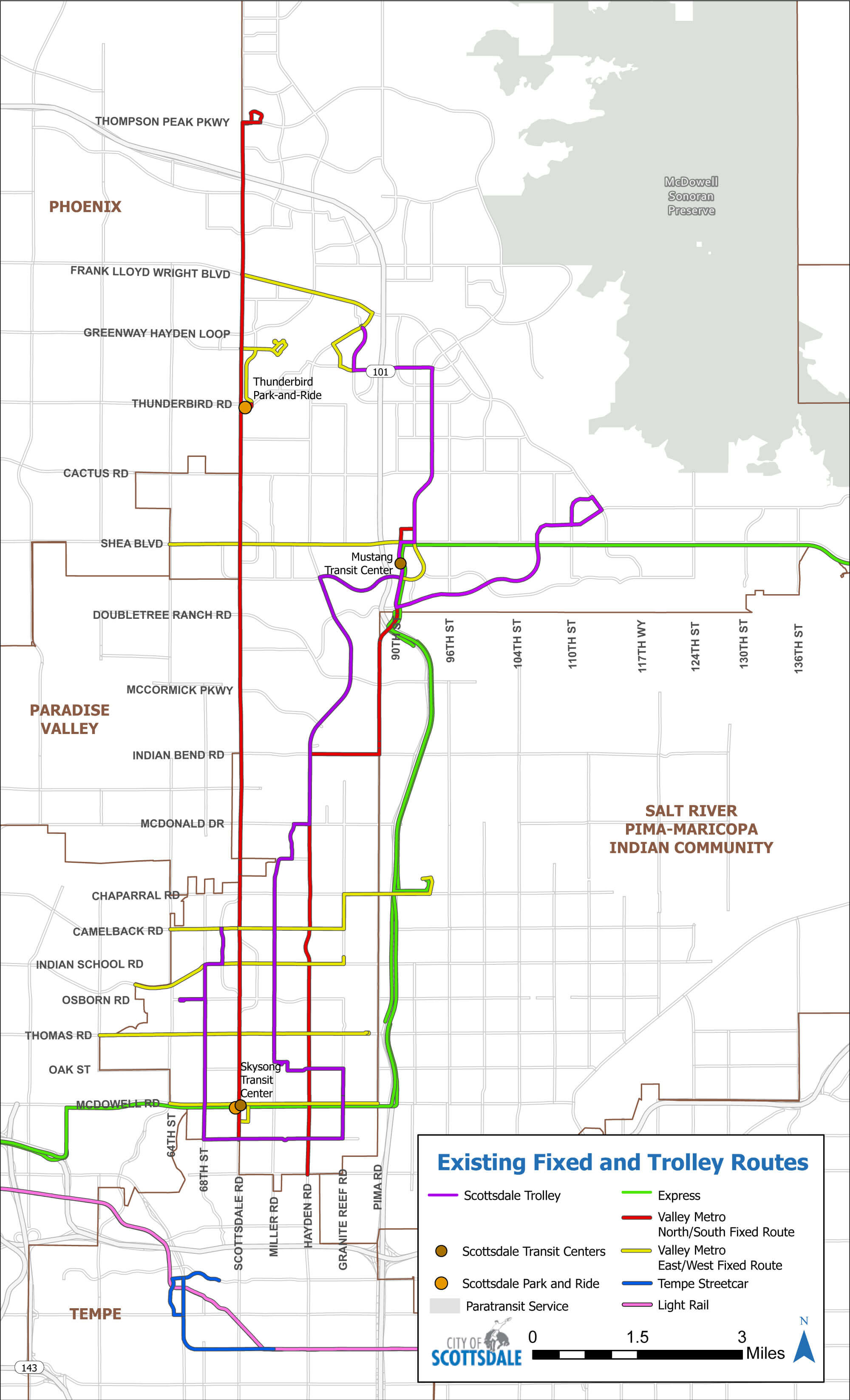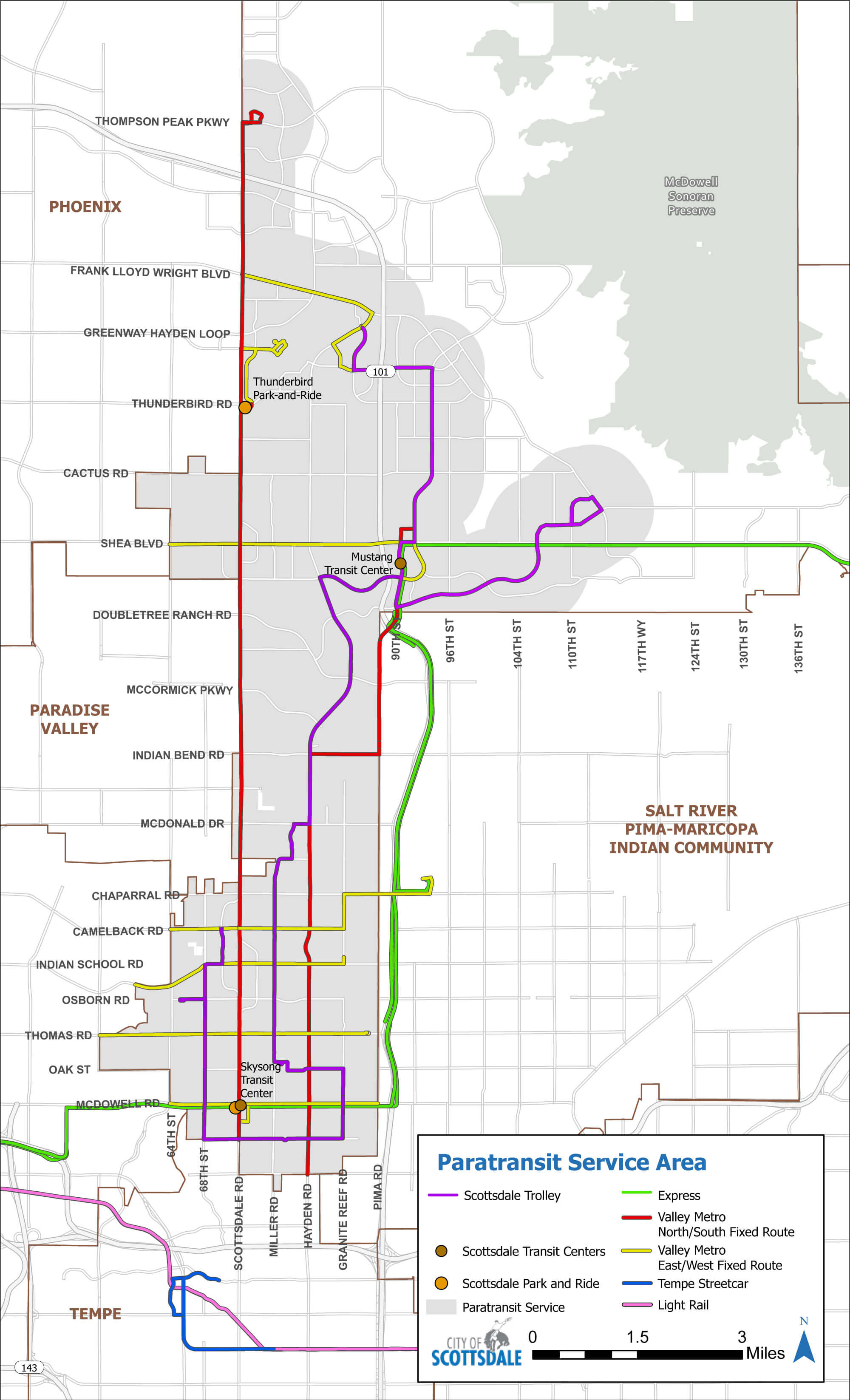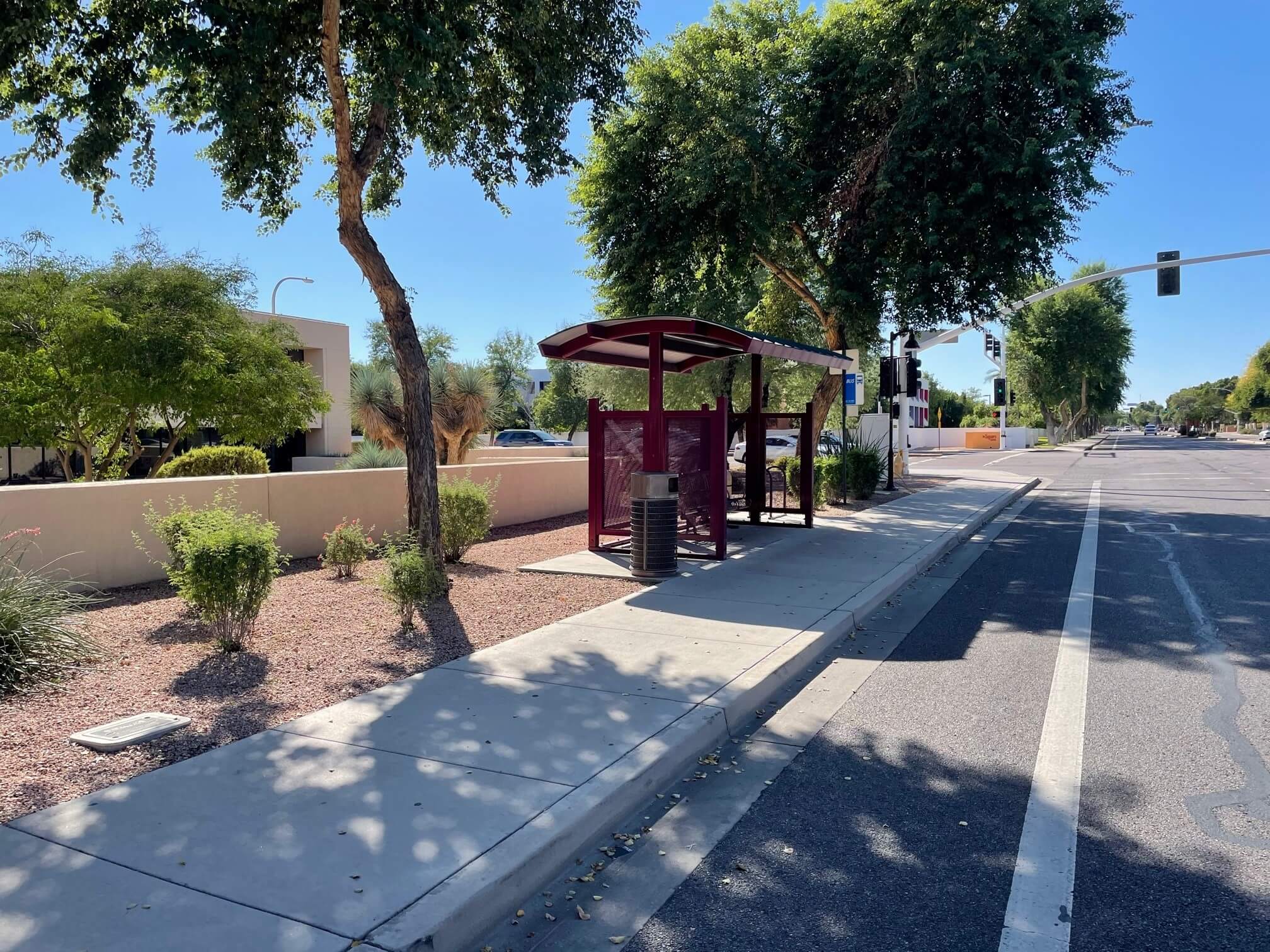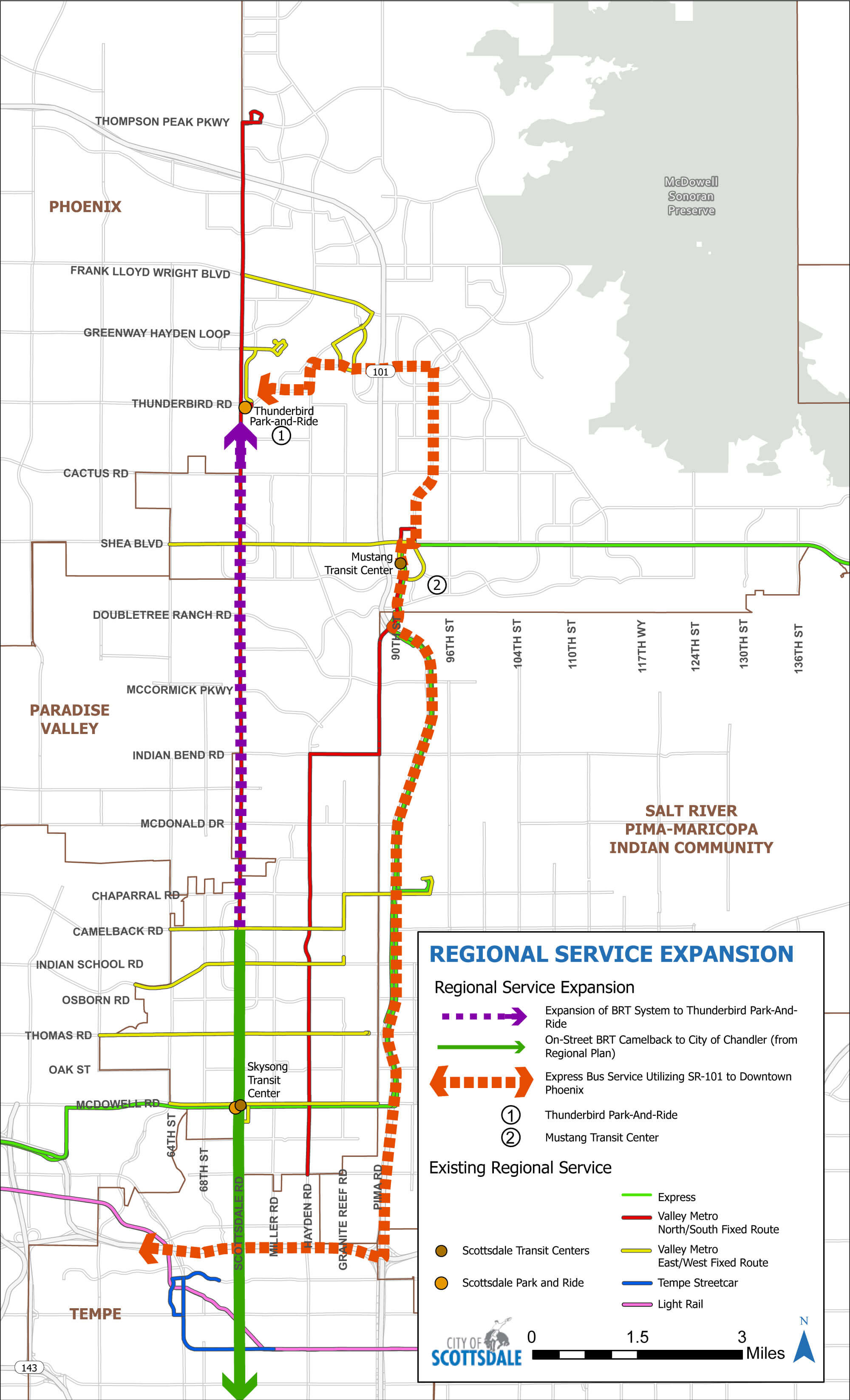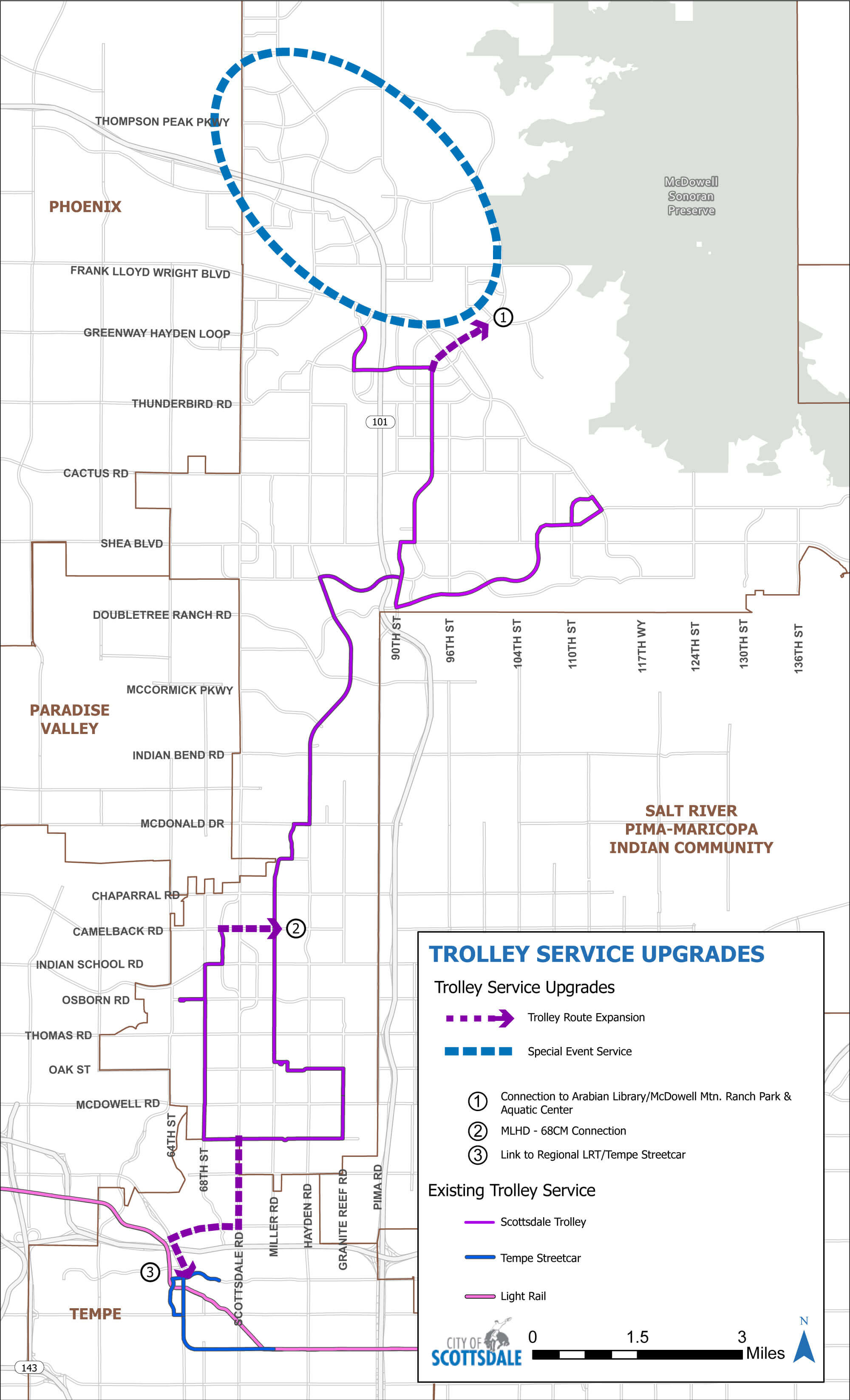Introduction
Public transit is a key component of the city’s transportation network and a critical mobility alternative for Scottsdale residents, visitors and workers. The Public Transit Element of the Scottsdale Transportation Action Plan (TAP) provides guidance on maintaining a viable transit system and expanding service to meet the needs of the community and region. This guidance aligns with the Connectivity section of the draft 2035 Scottsdale General Plan.
Public transit service coincides with Scottsdale’s unique character areas, each with varying needs and lifestyles. It also serves visitors from all over the world, along with a large seasonal population. An effective transit service must provide transportation choices for those who elect to use transit, as well as those who are dependent on it by integrating future technology and micro-mobility solutions. Ultimately, transit planning aims to enhance connectivity to schools and inter-jurisdictional coordination; provide accessible mobility choices; reduce congestion and pollution; and improve quality of life.
A robust transit system does not stop at city boundaries but makes strong connections to the regional system. Routes should effectively serve major employment hubs, activity centers, local businesses and schools throughout Scottsdale and provide transfers to other routes that link to various parts of the Valley. Convenient and safe access to transit supports employees who work within and outside of Scottsdale, along with students, from elementary to college age.
The future for Scottsdale transit hinges on the ability to leverage and build on the existing bus system and improve connectivity to the rest of the region through cost-effective and data-driven solutions. Transit changes go through a regional public involvement process twice a year, and proposed modifications are based on public input, ridership, public requests, survey data and funding. Continuing to build strong partnerships with neighboring communities, such as Phoenix and Tempe, and Valley Metro, the regional transit agency, is very important for ensuring a successful transit system in Scottsdale.
Continued funding for Scottsdale public transit also relies on people choosing to use it. To ensure transit service is attractive and competitive with other forms of transportation, it must be frequent, fast and convenient. In addition, the vehicles and bus facilities must be clean, reliable and comfortable.
Scottsdale Transportation & Streets developed a series of transit improvement strategies to be phased in over the next five to ten years. Planned improvements closely align with the draft 2035 General Plan and are consistent with the Scottsdale City Council’s objective of "Advancing Transportation."
